Florida - The Land of Flowers
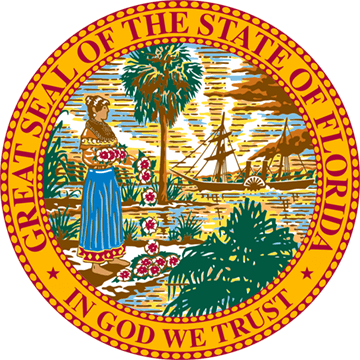
| State Bird: | Northern Mockingbird |
| State Flower: | Orange Blossom |
| State Tree: | Sabal Palmetto |
Florida is the 27th state of United States (admitted in 1845) and was the first area in the continental United States to be visited and settled by the Europeans. Prior to European settlement, Florida's indigenous population is estimated to have been 350,000.
Spanish explorer, Juan Ponce de León made contact in 1513 and named it la Florida, "the land of flowers." Prior to statehood, Spain, France, and Great Britain held sovereignty over Florida at some point.
Florida Geography
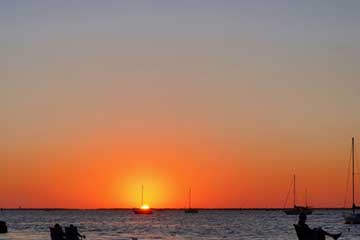
Weather
Most of Florida has a subtropical climate with the southernmost regions classified as tropical. The average summer highs are in the low 90s and the average winter lows are in the low 40s. Florida's temperate weather is due to the fact that nowhere is too distant from the ocean. Florida has over 1300 miles of coastline, the most in the continental United States, with all but its northern boundary surrounded by the Gulf of Mexico in the west and the Atlantic Ocean in the east. Florida has over 4500 islands that are 10 acres or more, second only to Alaska, and is home to the Florida Reef, the only living coral barrier reef in the continental United States and third largest in the world.
Regions
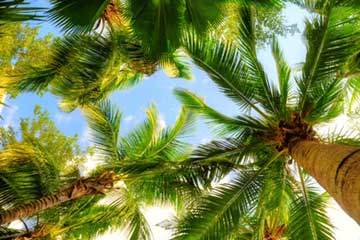
Florida has no officially-designated regions. Some lists are as few as three while others reach upwards of eight. FloridaVibes has organized the state into five regions: North, Central, and South, with North and South further split into Northwest and Southwest to help show the geographic and cultural differences between these regions.
Much of northern Florida shares a climate, culture, and geography similar to the American South, however, where Northwest Florida and the panhandle are fairly rural, North Florida is more developed with both Tallahasses's and Jacksonville's metro areas.
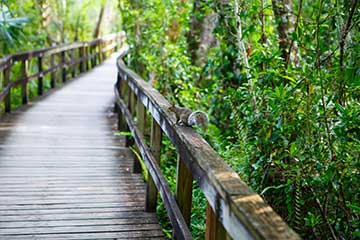
Central Florida is generally defined by its geographical location in the central area of the state. We too define it as the central area of the state, from coast-to-coast, and note that both Tampa and Orlando attract many tourists looking for fast-paced entertainment, specifically amusement parks - hot spots for family tourism.
Southwest and South Florida share similar climate and geography, but differ widely in culture and lifestyle. Where South Florida on the Atlantic Ocean, home of Miami, is more fast-paced and highly-developed, Southwest Florida on the Gulf of Mexico is more relaxed and less developed than the massive Greater Miami Area.
Florida Culture
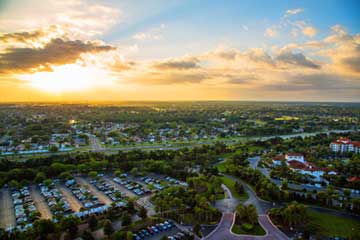
The United States is a melting pot of cultures and ethnicities from across the world, and this is ever present in Florida. In addition to the culture and lifestyles found throughout the American South, Florida is also heavily influenced by Europe, Latin America, its coastal regions, and international appeal.
Florida is a popular destination for both foreigners and residents of other states. Whether they're retiring, seeking better weather, looking for employment, or enticed by the no state taxes, Florida welcomes a variety of new residents from various places throughout the world each year for a variety of reasons.
Cuisine

While northern Florida's cuisine is strongly influenced by the American South, southern Florida is infused with influences from throughout the world, particularly the Caribbean, Latin America, South America, Europe, and Asia. Florida's international appeal has brought immigrants and their native cuisines from places around the world.
Florida Economy
Florida is the third-most populous state with a population of over 20 million. Its $1 trillion economy is the fourth-largest in the United States and would be 16th in the world if it were its own country.
Some of Florida's key industries include agriculture, education, finance, health care, insurance, leisure and hospitality, professional services, real estate, retail, and trade. Emerging industries include aerospace and defense, biomedical and life sciences, and commercial space travel.
Tourism

Amusement parks, beaches, golf courses, museums, theaters, state parks, and other recreational venues attract over a hundred million tourists to Florida each year.
Since 2015, when Florida broke the 100 million tourist mark, it has consistently broke each previous year's record. In 2018, over 125 million people visited Florida. Nearly half of those visitors, 55+ million, traveled to Florida for the Walt Disney World Resort, the most visited vacation resort in the world.
Florida's numerous beaches and State Parks are also popular destinations with 45+ million annual visitors combined.
Sports

Florida has the third most professional sports teams in the United States. It is home to three NFL teams, two MLB teams, two NBA teams, and two NHL teams. Florida is also home to the headquarters of NASCAR and PGA of America.
Florida also has numerous Division I NCAA collegiate football teams including the Florida Gators, Florida State Seminoles, and Miami Hurricanes, as well as the FIU Panthers, Florida Atlantic Owls, South Florida Bulls, and UCF Knights.